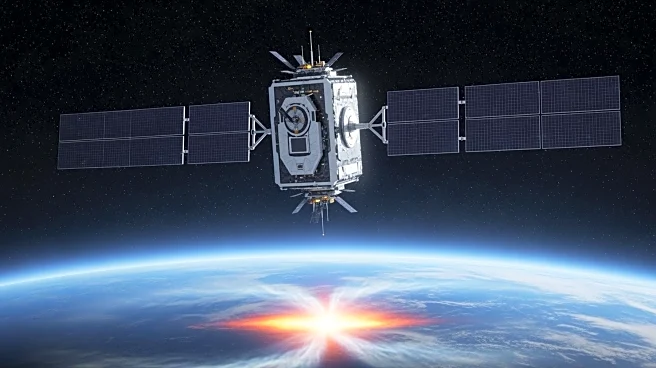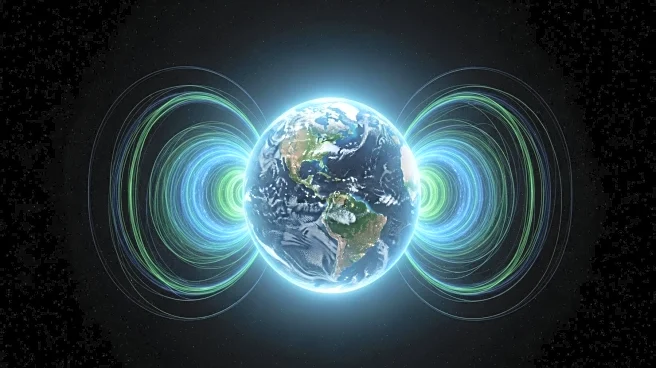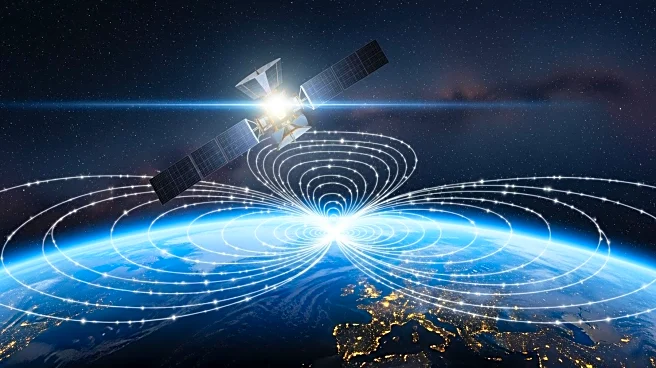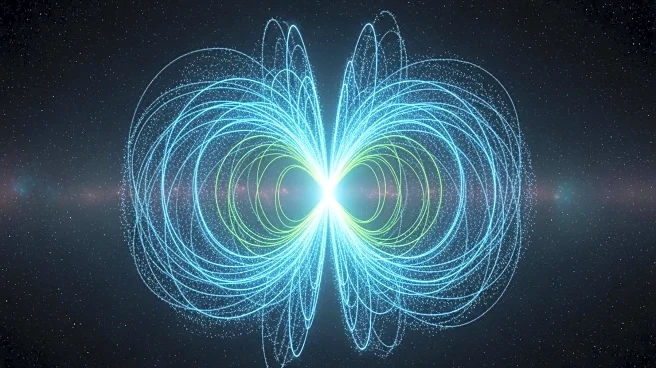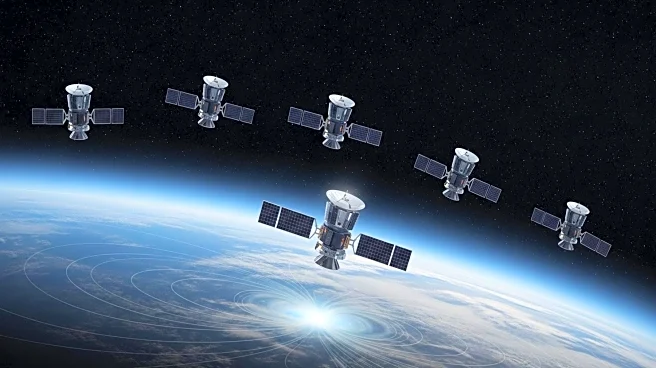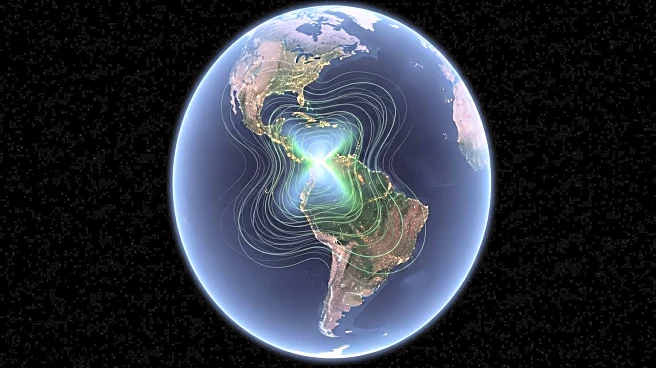What's Happening?
The European Space Agency (ESA) has been studying the Earth's magnetic field for 11 years through its Swarm operation, focusing on the South Atlantic Anomaly (SAA), a weak spot in the magnetic field located over South America. Originally discovered in 1958,
the SAA has been expanding, extending its reach across the Atlantic Ocean towards Africa. This expansion is attributed to unusual behaviors at the boundary between the Earth's liquid outer core and the rocky mantle layer, known as reverse flux patches. These patches are causing the magnetic field to weaken in specific areas. The ESA's data indicates that while the SAA is growing, other regions such as Canada are experiencing a weakening of their magnetic fields, whereas Siberia's field is strengthening. The ESA plans to continue gathering data on these phenomena through the Swarm mission.
Why It's Important?
The expansion of the South Atlantic Anomaly poses significant risks to satellites and spacecraft operating in low Earth orbit. As these vehicles pass through the region, they are exposed to higher levels of radiation, which can lead to malfunctions, damage to critical hardware, and even blackouts. This situation necessitates changes in the design of future satellites and spacecraft to mitigate these risks. The ongoing research by the ESA is crucial for understanding the dynamics of Earth's magnetic field and ensuring the safety and functionality of space technology. The findings have implications for space agencies worldwide, as they must adapt their designs to account for these changes in the magnetic field.
What's Next?
The ESA plans to continue its Swarm mission, extending the data collection beyond 2030. This extended timeline will allow for more comprehensive insights into the Earth's magnetic field, especially during the solar minimum, which offers unique opportunities for observation. Space agencies will need to incorporate these findings into the design and operation of future spacecraft to ensure resilience against the increased radiation exposure in affected regions. The ongoing research will also contribute to a better understanding of the Earth's geophysical processes, potentially influencing future scientific and technological developments.
Beyond the Headlines
The expansion of the South Atlantic Anomaly highlights the complex and dynamic nature of Earth's magnetic field, which plays a crucial role in protecting the planet from solar and cosmic radiation. The study of these anomalies not only informs satellite design but also contributes to broader geophysical research, enhancing our understanding of Earth's internal processes. This knowledge is vital for predicting future changes in the magnetic field and their potential impacts on technology and life on Earth.
